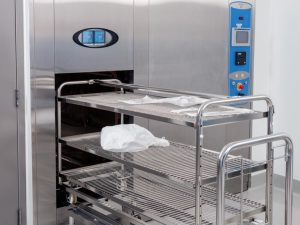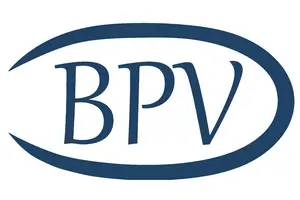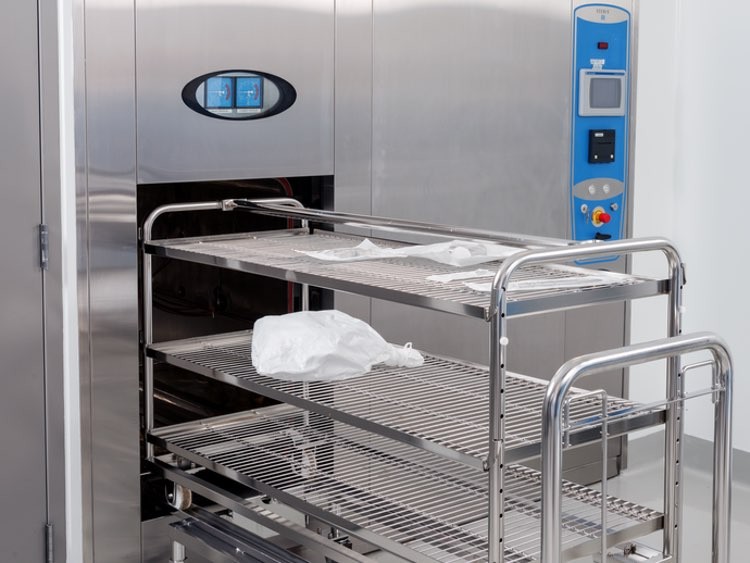
Defining Maximum and Minimum Porous Loads for Autoclave Sterilisation
In the pharmaceutical industry, maintaining strict standards of sterility is of paramount importance to ensure product safety and patient well-being. Autoclaves, the reliable workhorses of pharmaceutical manufacturing, play a vital role in sterilising equipment and materials.
To guarantee their effectiveness, pharmaceutical companies must conduct thorough validation processes, including cycle and load development, determining the minimum and maximum loads that an autoclave can effectively sterilise, in order to ensure robust and repeatable results.
In this article, we delve into the significance of defining these loads in the pharmaceutical context, the testing process involved, and how it ensures both operational efficiency and adherence to stringent regulatory requirements.
What are Minimum and Maximum Loads?
A maximum load represents the most items that may be sterilised in an autoclave for that particular load design and still be able to sterilise in a robust and repeatable manner.
This determination is critical to ensure that the autoclave can safely and effectively sterilise a substantial quantity of items without compromising the sterilisation process.
The minimum load of that particular load design is defined as the single load item that poses the greatest challenge to air removal when sterilised alone.
This determination is critical to ensure that the autoclave can safely and effectively sterilise an item which may not be sterilised efficiently due to the increased challenges of air removal whilst sterilising a lower mass load.
Why are Maximum and Minimum Porous Loads Crucial in Pharmaceutical Autoclaves?
- Ensuring Product Safety: Any risk of biological contamination can have severe consequences on product quality and patient health. Qualification of min/max loads ensures that all equipment and materials, within any given load, undergo proven qualification practices, permitting flexibility but also providing assurance of robust and reliable sterilisation conditions.
- Regulatory Compliance: Regulatory agencies such as the Medicines and Healthcare products Regulatory Agency (MHRA), Health Products Regulatory Authority (HPRA), U.S. Food and Drug Administration (FDA), and the European Medicines Agency (EMA) mandate strict adherence to Good Manufacturing Practices (GMPs). Some guidance documents are reflecting testing for min/max loads more specifically. For example, considering minimum and maximum loads is one of the critical process parameters advised to validate in annex 1 in section 8.38 and 8.7.
- Freedom in process: Awareness of Min/Max loads allows pharmaceutical companies to sterilise items that are in lower quantities than the maximum load which would otherwise be required with a fixed load. This determination ensures that the autoclaves can safely and effectively sterilise complex items which may not be sterilised efficiently due to the increased challenges of air removal whilst sterilising a lower mass load.
The Process of Determining Maximum and Minimum Loads in Pharmaceutical Autoclaves:
1.The first part of load development is to ensure it is loaded in a way that allows free-flow of steam, and allows to suitable levels of condensate drainage.
2. The next step is to place sensors throughout the load in as many high-challenge areas as sensibly possible to capture the worst-case conditions. (note: sensors should be placed in the high-challenge locations of at least one location of each unique item).
3. Determine suitability of load design & cycle design, making the necessary adjustments to ensure the critical criteria of each phase are addressed in a robust manner.
4. Repeat the process until the worst-case locations continue to meet the required criteria in a repeatable manner.
5. Once the load has been demonstrated to provide consistent and repeatable result, the locations for performance qualification (PQ) may now be established to be qualified in triplicate.
Conclusion:
Accurate temperature mapping is essential in pharmaceutical autoclaves, given the risk of pharmaceutical products inadvertently becoming contaminated with biological contaminants.
Defining maximum and minimum loads for autoclaves in the pharmaceutical industry is a vital step in ensuring the highest level of sterility is achieved if a load is to be processed in lower quantities depending on production requirements.
By consistently achieving effective sterilisation across various load sizes, pharmaceutical companies can confidently rely on their autoclaves for the critical task of sterilising items that will be used in producing the final product, ensuring quality and, ultimately, patient health.
As these qualifications are meticulously documented, the pharmaceutical industry can uphold its commitment to excellence and patient safety while adhering to stringent regulatory standards.
To find out more about our autoclave validation services, please contact us at [email protected]

